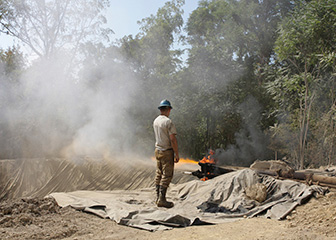Summary

| Quick Facts: Forest and Conservation Technicians | |
|---|---|
|
$33,390 per year
$16.05 per hour |
|
| Associate’s degree | |
| None | |
| None | |
| 36,500 | |
| -1% (Little or no change) | |
| -400 | |
What Forest and Conservation Technicians Do
Forest and conservation technicians measure and improve the quality of forests, rangeland, and other natural areas.
Work Environment
Forest and conservation technicians typically work outdoors, sometimes in remote locations.
How to Become a Forest and Conservation Technician
Forest and conservation technicians typically need an associate’s degree in a forest technology or technician program or in a related field. Employers look for technicians who have a degree that is accredited by the Society of American Foresters (SAF).
Pay
The median annual wage of forest and conservation technicians was $33,390 in May 2010.
Job Outlook
Employment of forest and conservation technicians is expected to experience little or no change from 2010 to 2020. Heightened demand for American timber and wood pellets will help increase overall job prospects for forest and conservation technicians.
Similar Occupations
Compare the job duties, education, job growth, and pay of forest and conservation technicians with similar occupations.
O*NET
O*NET provides comprehensive information on key characteristics of workers and occupations.
Contacts for More Information
Learn more about forest and conservation technicians by contacting these additional resources.









